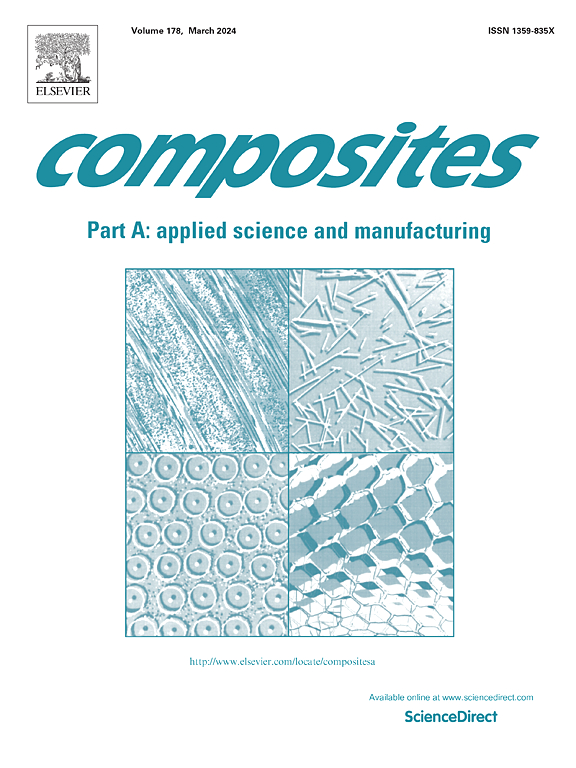Efficient analysis of characteristic responses to curing behavior using FBG sensors for residual strain controlling in CFRP laminates
IF 8.1
2区 材料科学
Q1 ENGINEERING, MANUFACTURING
Composites Part A: Applied Science and Manufacturing
Pub Date : 2025-03-22
DOI:10.1016/j.compositesa.2025.108869
引用次数: 0
Abstract
Fiber Bragg Grating (FBG) in-situ monitoring systems have become an effective tool for assisting with the high-precision molding and process optimization of carbon fiber-reinforced polymers (CFRP). This study aims to explore the underlying mechanisms by which FBG sensing signals characterize the curing behavior of CFRP. Initially, based on in-situ/non in-situ testing methods, the characteristic responsiveness of FBG sensing signals to the curing behavior of CFRP was explored. Furthermore, the feature response amplitude was used to evaluate the feature responsiveness of embedding setups (packaging structure and embedding techniques) to phase transitions. It was found that non-uniform adhesion and consolidation affected the sensor’s representation of curing shrinkage. Finally, using high characteristic response FBG sensors, the process optimal strategy for CFRP was explored. The proposed method for analyzing the characteristic response of FBG sensing signals establishes and validates the relationship between CFRP curing behaviors and signal points, as well as stage-specific amplitude changes. This research serves as a fundamental basis for accurately characterizing CFRP curing behaviors and enhancing high-precision forming process design.

求助全文
约1分钟内获得全文
求助全文
来源期刊

Composites Part A: Applied Science and Manufacturing
工程技术-材料科学:复合
CiteScore
15.20
自引率
5.70%
发文量
492
审稿时长
30 days
期刊介绍:
Composites Part A: Applied Science and Manufacturing is a comprehensive journal that publishes original research papers, review articles, case studies, short communications, and letters covering various aspects of composite materials science and technology. This includes fibrous and particulate reinforcements in polymeric, metallic, and ceramic matrices, as well as 'natural' composites like wood and biological materials. The journal addresses topics such as properties, design, and manufacture of reinforcing fibers and particles, novel architectures and concepts, multifunctional composites, advancements in fabrication and processing, manufacturing science, process modeling, experimental mechanics, microstructural characterization, interfaces, prediction and measurement of mechanical, physical, and chemical behavior, and performance in service. Additionally, articles on economic and commercial aspects, design, and case studies are welcomed. All submissions undergo rigorous peer review to ensure they contribute significantly and innovatively, maintaining high standards for content and presentation. The editorial team aims to expedite the review process for prompt publication.
 求助内容:
求助内容: 应助结果提醒方式:
应助结果提醒方式:


